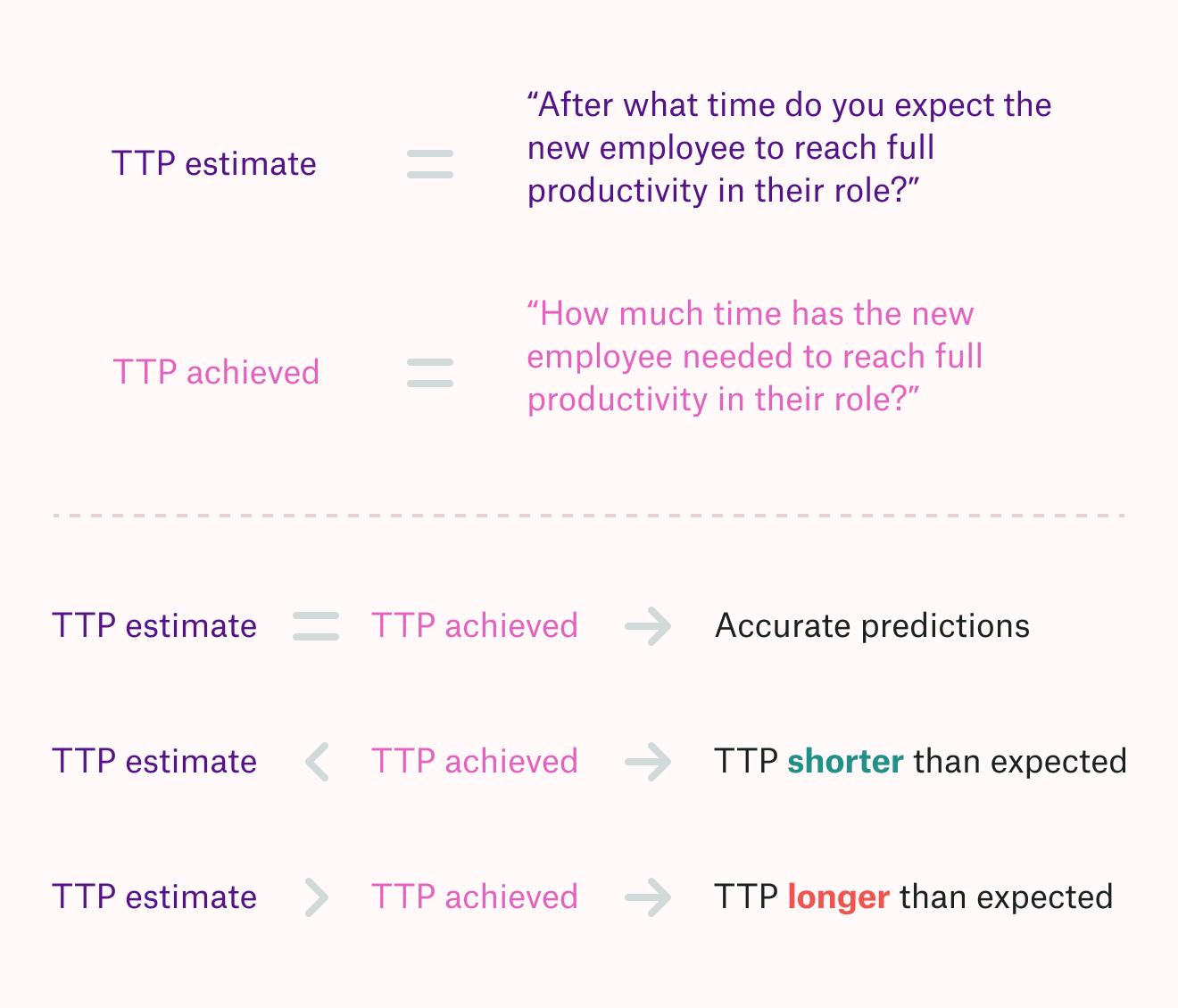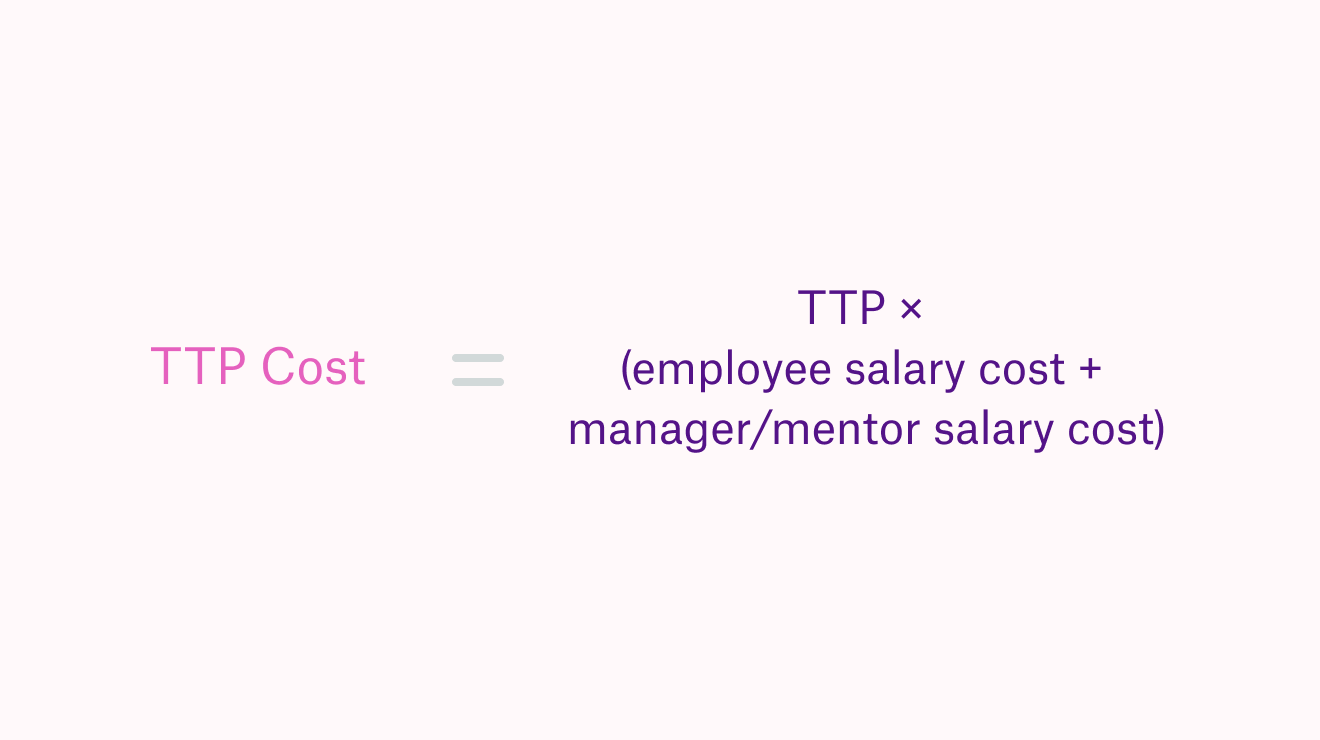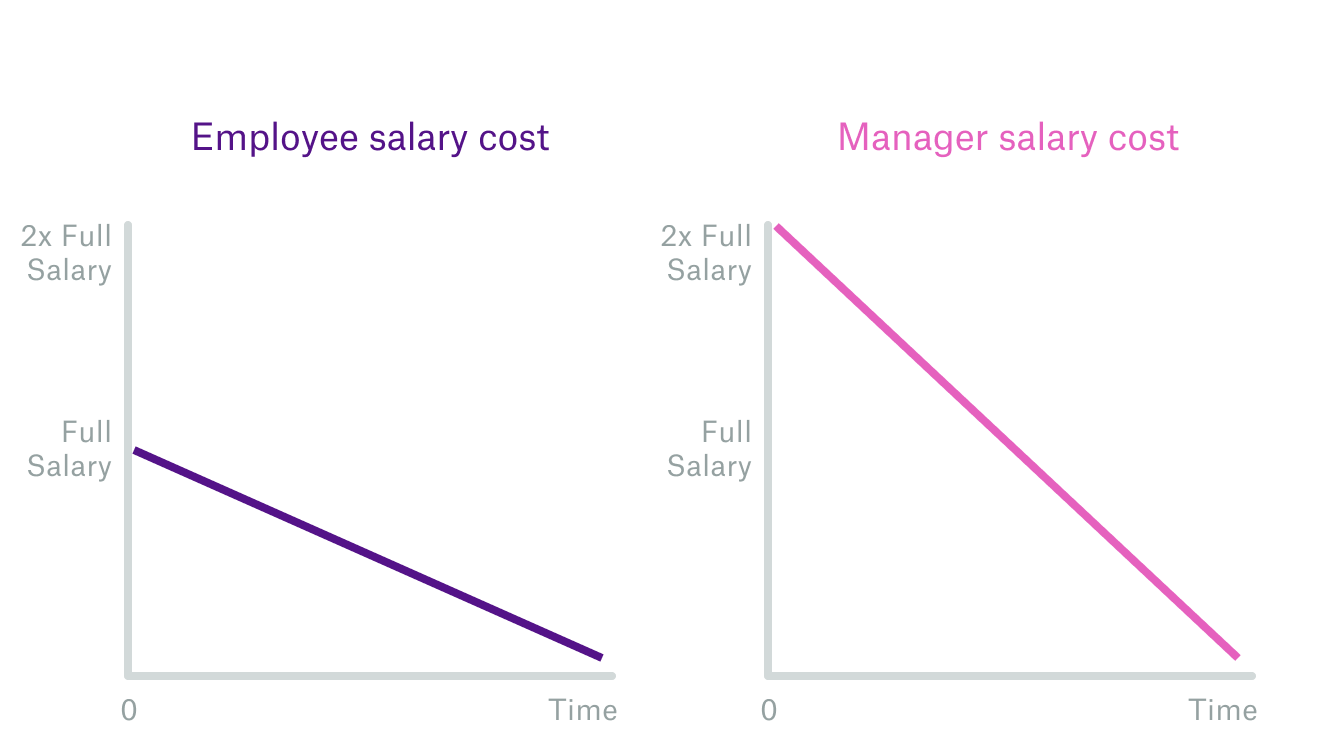What is time to productivity? Discover how the TTP metric can help you optimize your recruitment, onboarding, and management processes.
When hiring for a certain role, we want our new hire to take on responsibilities as soon as possible.
However, training and proper onboarding play a significant role in the future success of our new hires. So how do we determine the time frame for this?
The answer to the question is in the “time to productivity” (TTP) metric. It shows us the time that new hires need to start contributing to the organization at the expected level for their role.
It can also give us relevant hints about the effectiveness of recruitment, onboarding, and talent management practices.
For this reason, more and more organizations are interested in tracking this metric.

What is time to productivity?
The simplest definition is that time to productivity measures how long it takes a new hire to start contributing to an organization or a company. This calculation is straightforward: the shorter the TTP, the better!
It goes without saying that minimizing this time contributes to maximizing employee lifetime value. Still, we should be prepared that TTP can be lengthy – ramping up to full productivity can take even up to twelve months. TTP will also differ across seniority levels – it’s usually longer for junior employees than for seniors.

How do I calculate time to productivity?
We know that tracking Time to productivity is important to our process, but how can we measure it?
As there is no one universal definition of employee productivity, calculating Time to productivity can be tricky, complex, and time-consuming.
One way of measuring Time to productivity can be first, defining a specific set of KPIs for each role, and second, tracking the time that a new hire needs to achieve a satisfactory level of each KPI. However, this approach requires a solid KPI system in place for all onboarding programs, and a way to track it at scale. Also, you have to tell apart the standard achievement of goals and the achievement of productivity markers.
Sounds a bit overwhelming, doesn’t it? Don’t worry, there are alternatives.
For example, a good (and less complicated) approach to start measuring Time to productivity can focus on managers’ estimates of the time that new employees need to become fully productive and their actual results.
In other words, you can compare the manager’s first estimate of when an employee will reach full efficiency in the new role, and the follow-up answers about whether this employee has managed to achieve the estimate.
In this way, you can not only track the number of days to achieved productivity and compare different teams and roles stacked against each other, but also detect discrepancies between team leaders’ productivity definitions and the actual results of hiring and onboarding efforts.

You can go one step further and calculate how much the time of employee adaptation to the role and organization costs you. A basic formula to convert time into dollars is the following:

The salary cost of the new hires and their managers/mentors will decrease with time. We can assume that on day one the total cost would be equal to a full salary of the new employee, and two salaries of the manager (if the manager dedicates 100% of his time to the onboarding of the new hire). When the employee reaches the desired productivity level, both costs drop to 0.

Applying the TTP metric in your HR process
The adaptation of the new hires to their role can be costly, but we should treat it as a long-term investment. Investing in longer TTP for some departments can be a wise strategy to create talent hubs for the company.
For example, SaaS businesses (in particular their Tech Customer Support and Customer Success teams) can have a strong onboarding program that lasts for months, and a higher number of junior hires. With time, this workforce can be a perfect talent pool for several, more demanding roles in the company.
Certainly, we all expect that our investments will pay off at some point. What if time is passing by and our employees struggle with reaching full productivity levels? In such cases, it may be helpful to take a closer look at our talent acquisition and management practices.
- It’s important to track the quality of our hires. Ensuring that new employees have the right set of skills and knowledge for their roles, and that the job positions meet their expectations, is a crucial step to avoiding bad hires that may be less productive and leave shortly after joining the company.
- Providing the candidates with clear and complete information about the job, and using accurate evaluation methods in the selection process (for example, structured interviews, standardized tools and procedures) are good practices to improve job-employee fit.
- Effective onboarding is another crucial ingredient of optimal employee performance. Research shows that the company’s efforts in training and integrating new hires not only help these employees achieve better results, but also increase their commitment, job satisfaction and intentions to stay in the organization.
Ensuring a good understanding of the position requirements, confidence in performing the new role, and positive connections in the workplace are examples of characteristics that are key for successful onboarding.
- Monitoring leaders and managers – they can make a real difference in their team results. According to a popular saying, “people quit bosses, not companies”.
Although this idea is oversimplified, there seems to be some truth in it. Bad leadership may be harmful to the employees and organizations, resulting in lower employee motivation, dedication and satisfaction, and higher turnover and counterproductive work behaviors, to name just a few.
For this reason, making sure that the supervisors are qualified for their managerial and mentoring roles, is as important as proper onboarding and training of the new hires.
How to automate answering this question with Orgnostic
With Orgnostic’s people analytics software, you have all the tools to start tracking your employees’ time to productivity and its cost out of the box.
You can also explore the links between TTP and other relevant metrics, such as quality of hires and of the onboarding process, employee performance or turnover.
With all this information, you can improve talent acquisition and onboarding process management in your organization, save time and money, and keep your employees happy and productive.